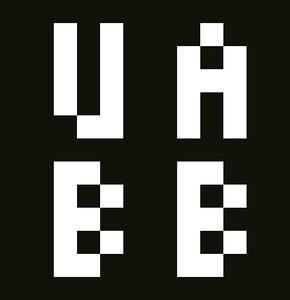“Eyes of the City” exhibition section
Application deadline: May 31, 2019
Futian District
Shenzhen
China
What happens when the digitally-augmented city acquires the ability to see—almost as if it had eyes?
MIT professor Carlo Ratti and the South China-Torino Lab (Politecnico di Torino, South China University of Technology) are pleased to announce the Open Call for proposals to participate in the “Eyes of the City” exhibition section in the framework of the 2019 Shenzhen Bi-City Biennale of Urbanism\Architecture (UABB). We invite international architects, planners, designers, philosophers, scientists, companies, educational institutions, research laboratories, think-tanks and students to submit their proposals until May 31, 2019.
Apply on eyesofthecity.net
Deadline: May 31, 2019
Eyes of the City
In the next few years, thanks to the most recent advances in Artificial Intelligence, deep learning and imaging, we are about to reach an unprecedented scenario, the most radical development in the evolution of the Internet-of-Things: architectural space is acquiring the full ability to “see.” Imagine that any room, street or shop in our city can recognize you, and autonomously respond to your presence. With the “eyes on the street,” it was people who looked at other people or the city and interpreted its mechanisms. In this new scenario, it will not be just people but also buildings and streets themselves that acquire the ability to observe and react as urban life unfolds in front of them. After the “eyes on the street,” put forward by Jane Jacobs in the 1960s, we are now entering the era of the “Eyes of the City.”
In Jacobs’ original conceptualization, the “eyes of the street” were a tool used to dissect a series of key spatial concepts—from the distinction between private and public space, to the limits of urban anonymity, to how borders are expressed and constructed, to the value of safety and the sense of belonging. Tomorrow’s “Eyes of the City,” fueled by historical breakthroughs in AI, from facial recognition to natural language processing, compels us to challenge all of these concepts, while also addressing novel issues – factors like the ethics of technological agency, the meaning of urban observation and design by proxy, the power of data ownership, and the ways in which technology can be re-appropriated by individuals and communities.
What can the consequences of the “Eyes of the City” scenario be on the built environment and on the way people live it? The Eyes of the City exhibition at UABB will ask exhibitors to tackle these themes while focusing on two parallel relationships: the one between space and users and the one between space and design practices, as the latter change under the pressure of technological advancement.
At the exhibition in UABB 2019, we aim to collect hypotheses and suggestions—imaginative, ironic, practical, visionary—so as to reflect on what kind of city we want to build tomorrow.
Structure of the call
The Open Call has a triple structure, as applicants can choose between three different types of contribution proposals:
–Call for Design Projects
–Call for Research Projects
–Call for Papers
Applicants can submit material for one or more types of contributions (Call for Design Projects, Call for Research Projects, Call for Papers), though they are strongly encouraged to choose only one of the three.
Credits
“Urban Interactions”: Bi-City Biennale of Urbanism\Architecture (Shenzhen) - 8th edition. December 2019. szhkbiennale.org
“Eyes of The City” section
Chief Curator: Carlo Ratti
Academic Curator: South China-Torino Lab (Politecnico di Torino - Michele Bonino; South China University of Technology - Sun Yimin)
Executive Curators: Daniele Belleri [CRA], Edoardo Bruno, Xu Haohao
Curator of the GBA Academy: Politecnico di Milano (Adalberto Del Bo)
eyesofthecity.net
“Ascending City” section
Chief Curators: Meng Jianmin, Fabio Cavallucci
Co-Curator: Science and Human Imagination Center of Southern University of Science and Technology (Wu Yan)
Executive Curators: Chen Qiufan, Manuela Lietti, Wang Kuan, Zhang Li


